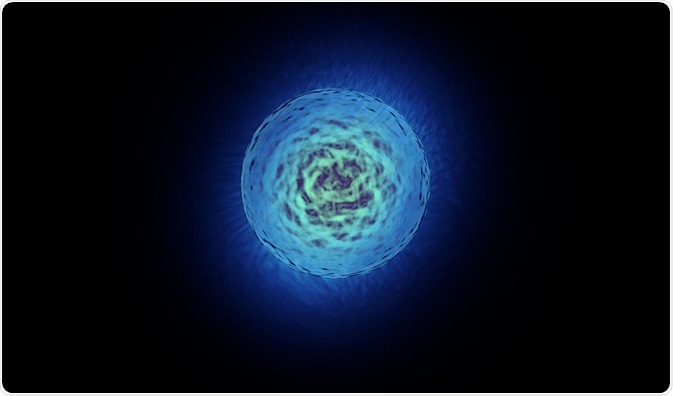By Jeyashree Sundaram, MBA
Biophotonics is a developing multidisciplinary field engaging light-based techniques functional to medicine and life science.

Credit: CI photos/Shutterstock
A significant feature of this field is visualizing and detecting cells and tissue. This involves the injection of fluorescent markers, into a living system, to follow dynamics of a cell and drug delivery.
Tissue biology involves the analysis of the microscopic structure of animal and human tissues. This is often performed by examining a thin tissue slice under a light or an electron microscope.
This inter-disciplinary analysis of the biology and photonics is utilized to detect, image, and govern biological components in the tissues.
Laser processing of tissue by biophotons
The mechanisms of various laser tissue interactions for removal of tissue, cutting, and coagulating are widely utilized for surgical measures in several major clinical professions such as dentistry, ophthalmology, gynecology, nose and throat surgery, surgery of ear, and urology.
This is inspired by the fact that the magnificent dominance on laser parameters permits ultra-precise surgical procedures without harming the surroundings of the regular tissue. In addition, removal and cutting of the tissue takes place at a very high temperature on laser surgery.
The blood vessels and nerve endings that have been slit during surgery get clotted and result in minimum blood loss and increased severity of pain.
The major advantage of lasers is that the transportation of radiation can be performed through flexible, thin, optical fibers to internal organs endoscopically through minor laceration.
Biophotonics application in the field of histology
Laser system with sensor control: Sensor controlled laser systems are of focus in the field of therapy. These systems have already been utilized in experimental assays with living tissues and humans.
They can also be utilized for intraluminal calculi and for destruction of tumor tissues. Most tumors are destroyed through vaporization by different laser sources and photodynamic therapy. The advancement of sensors with laser sources for treatment of malignant tissue for efficient, specific, and safe destruction of tissues is under research.
Hyper-spectral imaging (HSI): HSI, otherwise known as imaging spectrometer, is an evolving procedure for various medical applications, specifically in image-guided surgery and diagnosis of diseases.
HSI involves acquisition of three-dimensional (3-D) datasets called hypercube, comprising one spectral dimension and two spatial dimensions. It also aids in efficient surgical guidance and diagnosis of noninvasive diseases.
Light delivered to biological tissues is subjected to multiple scattering, while it propagates through tissue, from inhomogeneous biological structures and absorption mostly in melanin, hemoglobin, and water.
It has been assumed that the scattering, fluorescence, and absorption properties of tissue vary as the disease progresses. Therefore, the transmitted, reflected, and fluorescent light from tissue that has been captured by HSI contains quantitative diagnostic data about tissue pathology.
Recently, advances in image analysis techniques, computational power, and hyper-spectral cameras enable the utilization of HSI in various medical applications.
Diffuse optical imaging (DOI): Both diffuse optical spectroscopy (DOS) and diffuse optical imaging utilize near-infrared (NIR) in noninvasive extraction of spectral and spatial information from thick subsurface tissue structures.
DOI and DOS techniques are being tested in various clinical applications, specifically in muscle, breast, and brain tissues. This focuses on the application of DOS and DOI to cure breast cancer.
DOI techniques are classified into two groups: diffuse optical topography (DOI technique that provides topographic measurements) and diffuse optical tomography (DOI technique that creates tomographic images in 3-D).
Diffuse optical topography (DOT): This kind of topography is used to continuously monitor the brain function in the cortical areas. DOT can be carried out as reconstructed topography and direct topography or near-infrared spectroscopy.
- Near-infrared spectroscopy: This is the widely utilized method of DOT. In this approach, detectors and a group of light sources that are spatially distributed are positioned on the target’s surface. The sample tissue’s scattering characteristics enable the near-IR photons to scatter through it. A part of these scattered photons are sensed by the detector thereby examining the diffuse volume that exists between two positions.
If the tissue’s optical properties get modified after a period of time, there are possibilities for the photon to reach same detector by altering the measureable intensity. A 2D topographical data set can be constructed by measuring the changes between every set of a source and detector.
- Reconstructed topography: by acquiring a high-resolution image of the determined absorption changes, a 3D reconstruction of the image is produced. It is usually done via the detection of the apt absorption distribution, where the data measured is matched with simulation results of numerous absorption distributions inside the 3D image. Hence, the recording of the signal at various distances between source and detector is essential.
Diffuse Optical Tomography
This technique utilizes a method that resembles computed tomography in reconstructing 3D images. Optical tomography needs recording of sequence of tissue measurements as performed in reconstructed topography.
However, there is a need for getting numerous essential measurements in constructing the 3D image and this has to be acquired from various angles.
Biophotonics poised to make major breakthroughs in medicine - Science Nation
Credit: National Science Foundation/Youtube
Further Reading